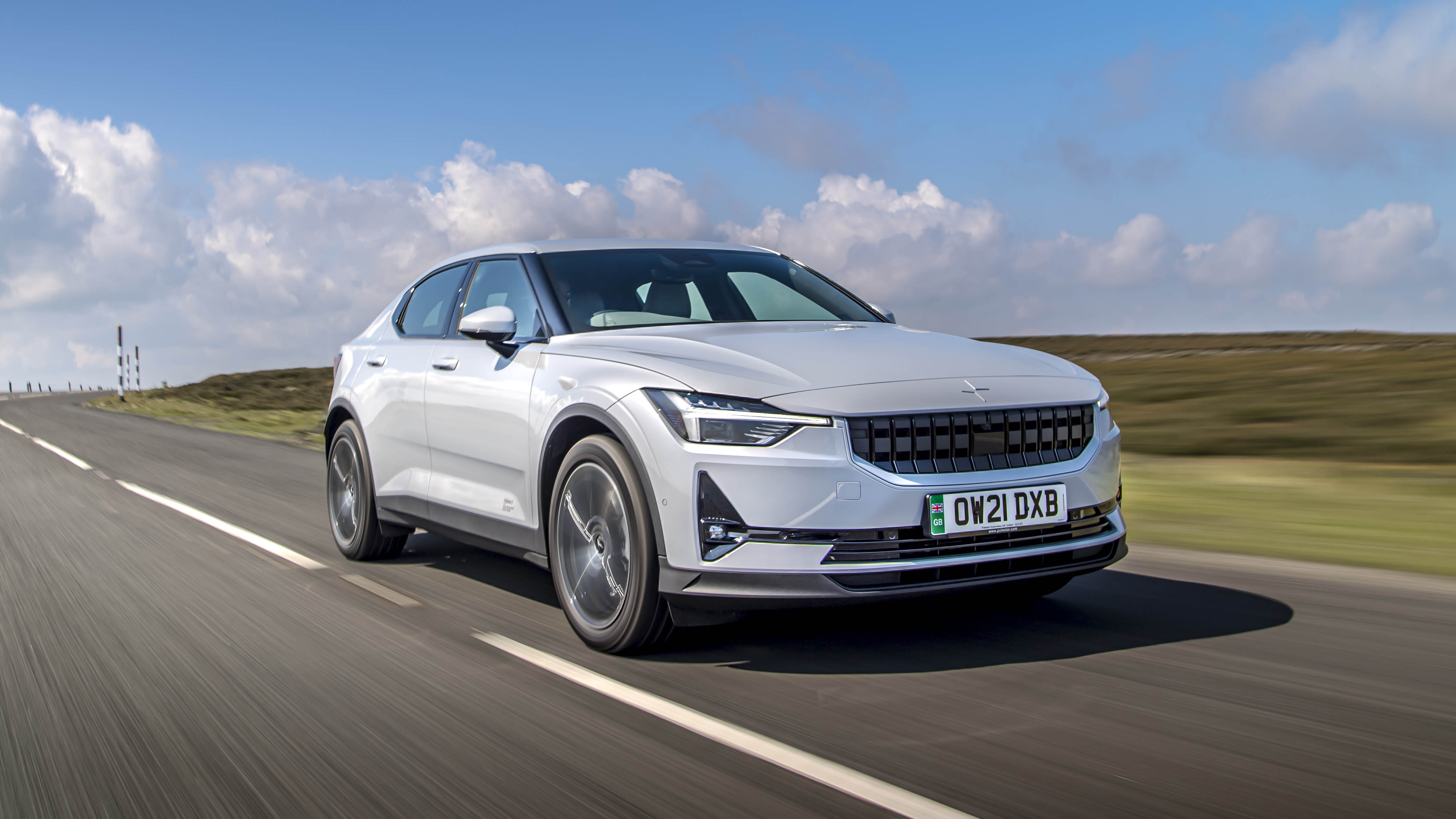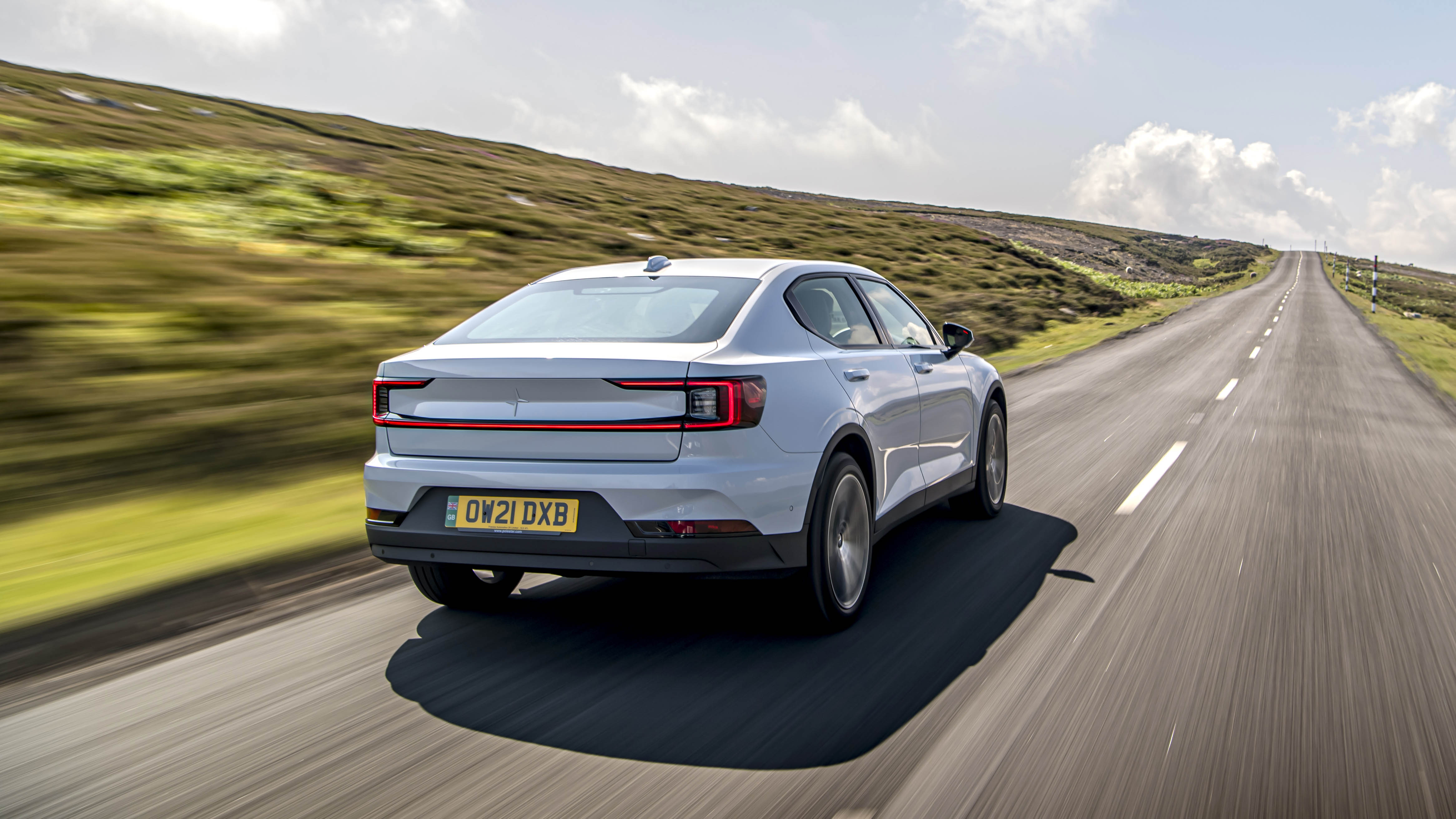
Are you sure I’m looking at something new here?
Believe it or not, you actually are. Polestar has now firmly got its foot in the door of the EV market in the UK and Europe, so it’s time for additional variants of the fastback Tesla Model 3-rival it calls the 2.
Until now, we’ve had to make do with the full-fat twin-motor, all-wheel drive 2 with its 298 miles of range, 78kWh battery pack and barnstorming 402bhp. Poor us.
Prices for that Long Range Dual Motor (we’re loving the simplistic naming strategy) iteration kick off at £45,900, though, so to bring the entry price of Polestar ownership down, we now have the £39,900 Standard Range Single Motor and the £42,900 Long Range Single Motor.
Which is this one, then?
Ah yes, unless you go for the original, TG award-winning Long Range Dual Motor and then add the £5,000 Performance Pack with its gold Brembo brake calipers, 20-inch forged alloy wheels and ‘Swedish Gold’ seatbelts (as well as the fancy Öhlins two-way adjustable dampers, of course) you might not be able to tell each 2 apart from the outside. That is unless you get right up close to read the sticker on either front door.
What we have here is the entry point, the so-called Standard Range Single Motor 2. Headlines are thus – a single electric motor is mounted up front and drives the front wheels alone with 221bhp and 243lb ft of instantly available torque. It’ll do the 0-62mph sprint in 7.4 seconds and the 64kWh battery provides a still-impressive WLTP range of 273 miles.
At the time of writing the ‘Standard Range Plus’ Tesla Model 3 – complete with its 5.3s 0-60mph time and 278-mile WLTP range – costs £40,990. Polestar is coming out punching with the £1,090 price undercut, then.
What else do I get for my money?
Well, Polestar’s standard kit list is fairly healthy. Even the base spec gets LED lights front and rear, lovely Scandi frameless mirrors, 19-inch wheels and heated seats. Then there’s the infotainment, which runs Google’s operating system through an 11.2-inch portrait touchscreen on all Twos. It’s really rather good, with rapid response to your inputs and a lovely armrest provided by the gear selector so you don’t mis-prod on the move. The climate control is erm… controlled via the screen but does get shortcuts along the bottom. Running Google Maps means you get a brilliant and recognisable nav too, and you can bring that up on the 12.3-inch driver display. Oh, and shock horror – the voice activation works remarkably well, but the range readout drops in 10-mile increments which can be disconcerting. As of autumn 2021 you’ll get Apple CarPlay as standard – good news.
The rest of the interior is equally as impressive. Vegan textile seats are standard and anyone that’s sat in a modern Volvo will know they’re brilliantly ergonomic. The steering wheel is a nice faux leather. Boot space remains the same – 405-litres with the rear seats in place – despite the lack of a second motor back there, as does space on the rear bench.
There must be an options list where I can splash some cash, surely?
Ah yes, we Brits love an optional extra, don’t we? You’re in luck. The only standard colour is black (or Void as Polestar calls it), so you’ll want to set aside £900 for something like silver (Magnesium), blue (Midnight) or kind of beige, we guess (Moon).
Perhaps pass on the £900 20-inch wheels, though. They aren’t the forged items from the Performance Pack, so they’ll add weight, possibly reduce your range ever-so-slightly and will impact on what is already a slightly firm ride. Plus, the standard 19-inchers look just as good.
Top Gear
Newsletter
Thank you for subscribing to our newsletter. Look out for your regular round-up of news, reviews and offers in your inbox.
Get all the latest news, reviews and exclusives, direct to your inbox.
As previously alluded to, you can’t have the Performance Pack on anything but the Dual Motor. That leaves you with the £4,000 Plus Pack (which adds a panoramic sunroof, a Harman Kardon sound system, heated rear seats and a wireless phone charger among other bits) or the £3,000 Pilot Pack (which focuses on safety with things like Pixel LED lights, Volvo’s 360-degree camera and the Pilot Assist cruise control). Or you can be greedy and have both packs together.
There is leather available as an option if you spec the Plus Pack, but it actually adds 4kg to the kerb weight. Heavy those cows, aren’t they?
How does it drive, then?
It won’t surprise you to hear that it’s very good. It may be a little lighter than the larger batteried 2 (1,940kg plays 2,113kg) but front-wheel drive and still near-two-tonnes does mean it isn’t the most dynamic thing. The suspension is fairly firm (but well damped so it isn’t uncomfortable) meaning there’s no real bodyroll, though, and there are mighty levels of grip through corners and off the line.
It’s not quite Model 3 quick, but 221bhp feels like more than enough in the real world and is plenty to get you up to around 70mph at a pretty pace. There’s not much motor sound, but the 2 is well insulated so road noise isn’t a problem either.
There are no drive modes per se, but you can alter the weight of the steering across three modes for increasing feel and there are three levels of regen too. Switch that one-pedal-style regen off and the brake pedal has a surprising amount of feel. Really, though, you want to know about range... a real-world 250 miles should be well within reach.
Anything else I should know?
It’s a cracking effort at a base-spec 2 from Polestar – a company that technically didn’t even exist as an independent entity until 2017. The Standard Range Single Motor manages to undercut the Model 3 in terms of price and still drives reasonably well, looks brilliant inside and out and is impeccably built.
No doubt we’ll have it and the baby Tesla (and possibly new contenders like a mid-spec Hyundai Ioniq 5) side-by-side soon for a proper comparison, but based on what you know so far – which way are you lot leaning? Answers in the comments section below please…
Featured

Trending this week
- Car Review
BMW iX3






